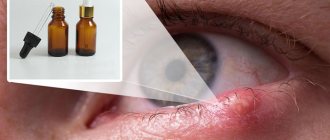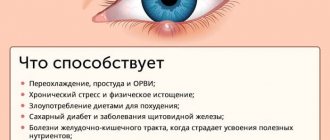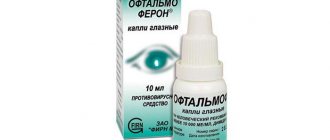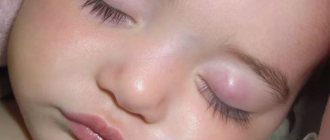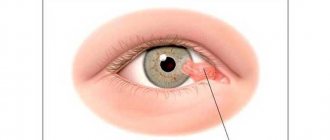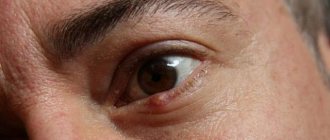Drops "Ophthalmoferon": composition and general characteristics
This medicine is used to eliminate signs of eye diseases caused by microorganisms or allergic reactions. The product provides a complex effect. This is due to its composition. The medicine contains the following components:
1. Interferon (fights pathogenic microbes, increases the body's resistance).
2. Diphenhydramine (eliminates symptoms of allergic reactions, acts as an analgesic).
3. Boric acid (has a disinfectant effect, destroys bacteria and viruses).
Restoring components are also included in the composition of Ophthalmoferon drops.
Reviews of the drug indicate that the product has a moisturizing effect. It softens the membrane of the eye, forming a protective coating on it.
Additional components
Oftalmoferon contains diphenhydramine hydrochloride. This substance is commonly known as diphenhydramine. It provides anti-inflammatory and analgesic properties of the drug. Diphenhydramine stops the production of inflammatory mediators and allergic reactions by blocking histamine H1 receptors. 1 ml of medicine contains 1 mg of diphenhydramine. Diphenhydramine reduces capillary permeability, tissue swelling, redness, and itching. The action is maintained for several hours. Among the additional components we can highlight boric acid, which gives a certain antiseptic effect. Acid is needed to fight secondary infection. Other components: sodium chloride, povidone, sodium acetate, water. These components are needed to preserve the liquid substance and extend the shelf life. Thanks to this composition, the drug moisturizes the eyes well, repeating the function of tears.
When is it recommended to use the medicine?
The product should be used in the presence of the following pathologies:
1. Inflammatory diseases of the connective membrane of the eyes caused by microorganisms (for example, herpes or viral infection).
2. Various types of acute corneal pathologies.
3. Ulcers of the cornea.
4. Allergic reactions.
5. Dryness of the mucous membrane of the eye.
6. Hay fever (accompanied by redness, itching and swelling of the eyelids).
Ophthalmoferon drops receive mostly positive reviews from doctors. They are often used in the postoperative period. Drops provide a good restorative effect after surgical interventions on the cornea.
How to carry out therapy with Oftalmoferon
Instructions for using eye drops require compliance with the following recommendations:
1. For acute infectious diseases accompanied by inflammation of the organs of vision, you need to drip one to two drops of medicine six to eight times a day.
After symptoms have subsided, you can switch to a lower dose (two to three times a day). When the signs of the disease completely disappear, therapy will need to be stopped.
2. If the mucous membrane of the eye is dry, use drops every day. In this case, it is necessary to apply them twice a day. The recommended dosage is two drops per dose. The course of treatment should continue for at least twenty-five days until the pathological phenomena are completely eliminated.
3. After eye surgery, you need to use a product to prevent the development of infections. In this situation, it is necessary to use Ophthalmoferon eye drops for ten days.
The instructions for use say that the product should be used twice a day. The recommended dose is two drops per dose. Despite the fact that the product can be purchased at a pharmacy without a prescription, therapy should be carried out under the supervision of a specialist. Only a doctor can correctly assess the patient’s condition and give the necessary recommendations for treatment.
Oftalmoferon - drops for the treatment of viral eye infections
Ophthalmoferon eye drops are a modern antiviral drug. It was developed in 1999, passed clinical trials and certification.
Since 2004, the medicine has been put into mass production. Doctors prescribe it for both adults and children.
In this review, we will look at the composition and effect of the product, indications for use, rules for its use and dosage, and also get acquainted with analogues.
What it consists of and how it works
Oftalmoferon (Oftalmoferon) is unique in its composition. The drug has no structural analogues. The main active ingredients of the drug:
- Human recombinant (that is, obtained outside the body) interferon alpha 2 (content in 1 ml of medicine - from 10 thousand units). The component was synthesized using modern methods of genetic engineering and molecular biology. This element is active against a wide range of viruses and also has an immunostimulating effect. Preparations based on recombinant protein are characterized by a minimal number of side effects and increased efficiency.
- Diphenhydramine or diphenhydramine (concentration in 1 ml of medication - 0.001 g). Relieves inflammation and has an antiallergic effect. It also has an anesthetic (pain-relieving) effect, which is especially important for certain eye pathologies accompanied by damage to the conjunctiva.
The drug also includes auxiliary components. One of them is boric acid. It is a strong antiseptic that effectively combats the development of secondary bacterial infection. To enhance and prolong the action of the active substances, as well as to protect the mucous membrane of the eye, additional ingredients have been added to the composition:
- macrogol;
- purified water;
- sodium acetate;
- povidone;
- sodium chloride;
- disodium edetate;
- hypromellose.
Oftalmoferon acts locally: it enhances restoration processes in the cornea, quickly eliminates signs of viral eye infections, and relieves inflammation caused by surgery. In this case, the components of the drug are practically not absorbed into the systemic circulation.
Indications
The instructions for use list the indications for prescribing the medication:
- viral conjunctivitis - inflammation of the conjunctiva, that is, the mucous membrane of the front surface of the eyeball and the inside of the eyelids;
- viral keratitis (including those accompanied by corneal ulceration) - the formation of foci of inflammation in the cornea, threatening a decrease and even loss of vision;
- viral uveitis - inflammation of the choroid of the eye;
- dry eye syndrome - lack of moisture in the cornea and conjunctiva, resulting from pathological changes in the tear fluid; manifests itself through a feeling of sand, burning and/or pain in the eyes, profuse lacrimation, redness of the conjunctiva, and photophobia.
Although this is not indicated in the instructions, Oftalmoferon is often prescribed for barley, an inflammatory process in the hair follicle. This pathology is usually caused by viruses, so the medicine is effective in combating the disease.
Oftalmoferon will help with barley.
The drug is also used to prevent complications before and after eye surgeries, including keratoplasty (cornea transplant).
Oftalmoferon has another, not entirely standard, use. Usually the same viruses that cause eye infections also cause a runny nose. Therefore, doctors sometimes prescribe eye drops for instillation into the nose.
Release form, manufacturer, price
Oftalmoferon is produced by the Russian company ZAO Firn M. The only form of release of the medicine is eye drops. It is a colorless (or slightly yellowish) transparent liquid without odor or mechanical inclusions. The product is bottled in plastic dropper bottles with a capacity of 5 ml or 10 ml.
You can buy the drug at a pharmacy without a prescription. But an in-person consultation with an ophthalmologist in the presence of symptoms of an eye infection is necessary in any case: only a specialist can make a diagnosis and determine whether Oftalmoferon will be effective in treating a specific disease. The average price of a 10 ml bottle of medicine is 300 rubles, 5 ml is 240 rubles.
Oftalmoferon is stored in a dark place, protected from direct sunlight at a temperature of 2-8°C.
After opening the bottle, you can use the medicine for a month, after which the solution becomes unusable.
Wash your hands thoroughly before using any eye drops. If there is dried pus on the eyelashes and eyelids, rinse your eyes with furatsilin solution, chamomile decoction, strong tea leaves or just boiled water. At the same time, follow an important rule: for each eye there is a separate container with liquid and, of course, a separate cotton swab.
Before instillation, tilt your head back and look up. Then gently pull back the lower eyelid. Drop the required amount of medicine into the “pocket” formed between the eyeball and the eyelid (conjunctival sac).
The dropper spout on the bottle allows you to easily measure the prescribed dose. Then close your eyelid and press it against the bridge of your nose for a while to prevent the medicine from leaking out or getting into your sinuses.
Important: do not touch the eye with the pipette to avoid infecting the solution.
Do not forget to remove your lenses before using the drug.
If the patient wears contact lenses, they must be removed before instillation and remain without them for at least 15 minutes after the procedure.
If, during treatment with Oftalmoferon, symptoms of eye diseases do not disappear within 5 days (or even intensify), consult a doctor.
You may need to clarify the diagnosis and select other medications.
Dosage
The instructions describe the following dosages:
- Inflammatory eye diseases caused by viral infections: in the acute stage - 1-2 drops every 3-4 hours (up to 8 times a day), as the picture improves, the number of instillations is reduced to 2-3 times a day. Treatment continues until complete recovery.
- Dry eye syndrome - 1-2 drops in the morning and evening for a month.
- Prevention of postoperative complications: 1-2 drops twice a day (only in the affected eye) for 10 days.
- After corneal transplantation: 1-2 drops (into the affected eye) 3-4 times a day for 2 weeks.
Sometimes doctors prescribe a drug to support the eyes when they become significantly tired - for example, during long-term daily work at a computer or constant wearing of contact lenses.
Download instructions for use →
Oftalmoferon for children
The drug has no age restrictions. Oftalmoferon is prescribed even to newborn children.
For all age categories of patients, there is a single release form with the same concentration of medicinal substances. The dosages prescribed in the instructions are also universal.
The ophthalmologist makes adjustments, focusing not on the patient’s age, but on the characteristics of the disease.
For children, it is more convenient to carry out the instillation procedure together: one fixes the baby’s arms and head, the other directly deals with the eyes. It is better to lay the baby on his back. An older child is able to endure the procedure while sitting with his head tilted up.
Contraindications and side effects
Individual intolerance to the components of the drug is the only contraindication to treatment with Oftalmoferon eye drops. During pregnancy, they are prescribed with caution, since the long-term effects of the components of the drug on the fetus have not been studied.
According to the instructions, no side effects have been identified when using the drug. However, reviews indicate that sometimes patients experience a burning sensation in the eyes, which manifests itself immediately after instillation.
Practitioners' opinion
Feedback from doctors and patients will help form a more complete understanding of Oftalmoferon.
Zimina N.V., ophthalmologist with 15 years of experience:
“Ophthalmoferon is an effective drug that can be dropped into the eyes and nose for viral infections. It acts gently and the results appear quickly.
There is one negative point - recently, allergic reactions to the components of the product have often occurred in children.
A common reason for this is the illiterate use of drops, when parents of young patients neglect the decreasing regimen.”
Alina M., 33 years old:
“In the spring, dust from the road got into my eyes. In the evening, severe itching began, the conjunctiva turned red, and the eyelids became swollen. Rinsing with strong tea leaves did not help, so I had to see a doctor.
Oftalmoferon was prescribed. The price seemed too high to me for such a small volume.
But I liked the effect - the intensity of the symptoms began to decrease from the very first use, and after 4 days the eyes were completely healthy.”
Marina V., mother of 5-year-old Arina:
“My daughter has a very weak immune system. And our colds are usually accompanied by conjunctivitis. The eyes become so swollen that after a day or night of sleep you have to soak them for a long time to open them.
In one of these cases, we were prescribed Oftalmoferon. My daughter complains of a burning sensation when instilling it, but it goes away quickly.
But the very next day, maximum two days later, the child’s eyes are completely clean.”
Analogs
Oftalmoferon has no analogues in composition. However, pharmacies have antiviral drugs that have a similar effect. These include, in particular:
- Aktipol - drops based on aminobenzoic acid, stimulating the production of endogenous (that is, its own, internal) interferon. The average price of a 5 ml bottle is 250 rubles.
- Oftan Idu is a product with the active ingredient iduxoridine. As a result of a complex reaction, this component is introduced into the DNA of harmful viruses and destroys them. Available in the form of eye drops. The average price (10 ml) is 300 rubles.
- Poludan is a lyophilisate (dry powder) for the preparation of eye drops based on a complex of polyadenylic and polyuridylic acids. It has an immunostimulating effect and activity against a wide range of viruses. Costs on average 220 rubles.
Analog of Oftalmoferon - Poludan.
Summary
Oftalmoferon is a medicine effective in combating viral eye infections.
Advantages of the product:
- fast action;
- activity against a wide range of viruses;
- minimum contraindications;
- no significant side effects;
- Possibility of use from the first days of life.
Flaws:
- relatively high cost;
- Possible short-term discomfort during instillation.
Natalia Roy
Source: https://ophtalmolog.ru/lekarstva/protivovirusnye/ophtalmoferon.html
Drug analogues
Engaged in the manufacture of Ophthalmoferon drops. This is a Moscow company that produces many other medicines. There are several drugs that have an effect similar to that of Ophthalmoferon eye drops. Analogues of the drug are produced by other companies. These include the following drugs:
1. "Interferal".
2. "Intron A".
3. "Eberon alpha R."
4. "Laifferon".
5. "Alfarona".
"Ophthalmoferon": use during pregnancy and childhood
The medicine can be used by everyone, regardless of age. Pediatricians often prescribe Ophthalmoferon drops to minor patients. Reviews from doctors indicate that the drug is safe even for infants. However, it is not recommended to use the product during pregnancy and breastfeeding, since there is no accurate data on the effect of drops on the condition of the woman and baby. Although some doctors still prescribe Oftalmoferon to pregnant women in cases where it is extremely important to cure the expectant mother.
Additional Information
When using this product, you must adhere to the following rules:
1. Store an open bottle of drops for no more than thirty days.
2. Keep the drug in a dark place, at a temperature of two to eight degrees Celsius.
3. If a person wears contact vision correction, they should be put on only fifteen minutes after applying the drops.
4. It is recommended to use Ophthalmoferon drops according to indications; it is advisable to first consult a doctor.
The product has a complex effect and is aimed at solving many problems associated with diseases of the organs of vision.
According to doctors, many drugs can be used in conjunction with this medicine. Other agents for relieving inflammation, fighting bacterial infections and having a regenerating effect enhance the effect of Ophthalmoferon. The medicine can be bought at a pharmacy. The average price in Russia varies from two hundred fifty to three hundred rubles.
Analogs
Usually, the effect of the drug is noticeable on the second day of treatment. Therefore, if there is no result after 3-5 days of therapy, it is necessary to contact an ophthalmologist and replace Oftalmoferon with an analogue. If the symptoms of the disease only get worse, this can be done earlier.
Popular analogues
- Acyclovir. An eye ointment with antiviral properties, the effect of which is provided by acyclovir. Prescribed for keratitis caused by herpes and chickenpox viruses. After use, a burning sensation is possible, and an allergic reaction is less likely to occur. Cost – 115 rubles.
- Zovirax. Eye ointment with acyclovir, which is prescribed mainly for damage to eye structures by the herpes virus. The drug is approved for use from birth. Possible side effects: macular keratopathy, allergic reaction, blepharitis, local irritation. Cost – 180 rubles.
- Cromohexal. A remedy for the treatment of allergic eye lesions. Its effectiveness is due to the activity of sodium cromoglycate. Prescribed only to patients over 2 years of age. Cost – 100 rubles.
- Levomycetin. These drops have an antibacterial effect, so they are prescribed for blepharitis and similar diseases. For children, the drug is prescribed only by an ophthalmologist. The price is about 20 rubles.
- Okomistin. An antiseptic drug intended for the treatment of bacterial and viral eye lesions. The average cost is 150 rubles.
- Okulochel. Homeopathic remedy with extracts of echinacea, euphrasia and some other plants. Safe for children. The average cost is 500 rubles.
- Tobrex. Antibacterial eye drops with a broad spectrum of action based on tobramycin. Effective as a therapy for infectious and inflammatory conditions. Tobrex drops can be prescribed to children. After use, swelling, redness and irritation may occur. The drug is prescribed for a short period of time, since there is a risk of developing superinfection. The average cost is 200 rubles.
- Sulfacyl sodium. The drug is used to treat conjunctivitis in children and adults. Can be used for preventive purposes. The average cost is 30 rubles.
- Vitabact. Antimicrobial and antiseptic medicine. Prescribed for children. The average cost is 350 rubles.
Only a doctor can select an analogue, since it is necessary to take into account the active components, mechanisms of action, and age restrictions. Oftalmoferon is prescribed to adults and children for viral eye diseases. It allows you not only to reduce the unpleasant symptoms of inflammation, but also to influence its cause. Improvements become noticeable almost immediately after using the drops.
Sources used:
- New standards for providing ophthalmological care on an outpatient basis. Textbook / A.N. Amirov, R.N. Tokinova, E.I. Mingazova. — M.: Smart Doctor, 2015.
- Atlas of ophthalmology / G.K. Kriglstein et al. - M.: Medical Information Agency, 2009.
- Dry eye syndrome and ocular surface diseases. Clinic, diagnosis, treatment / V.V. Brzhesky, G.B. Egorova, E.A. Egorov. - M.: GEOTAR-Media, 2021.
- Department of Ophthalmology and Visual Sciences University of Wisconsin System
Benefits of the medicine
Reviews from doctors and patients about the drug “Ophthalmoferon” are mostly positive. Many people talk about the high efficiency and rapid action of the drug. It helps to cope with inflammation, redness of the eyes, eliminate purulent discharge, reduce dryness, itching and pain. Many people use the product when faced with viral diseases (such as colds and flu) that negatively affect the condition of the eyes. For some, it has become a real salvation when signs of seasonal allergic reactions occur. The drug also relieves symptoms of visual fatigue.
Due to its complex composition and action, this medicine is popular and deserves, for the most part, high praise. In addition, patients find that dosing the drops is easy, since they come in convenient packaging. Pediatricians who prescribe Oftalmoferon to children, as well as many parents, say that the drug is safe, does not cause side effects, and the only contraindication to its use is intolerance to the components. Fortunately, this phenomenon is extremely rare.
Application of Oftalmoferon
Oftalmoferon is usually prescribed for the treatment of viral and allergic eye diseases; side effects are reported very rarely. Indications for use:
- herpetic uveitis or keratouveitis;
- viral conjunctivitis (herpetic, enteroviral, adenoviral, hemorrhagic forms);
- viral keratitis (punctate, tree-like, adenoviral, card-shaped, vesicular forms);
- chlamydia infection;
- bacterial infections of the conjunctiva;
- allergic conjunctivitis;
- chickenpox eye symptoms;
- postoperative keratopathy.
Less commonly, drops are prescribed to treat dry eye syndrome. For preventive purposes, drops can be used before and after surgery, as well as to prevent relapse of viral keratitis. Sometimes drops are prescribed for chronic visual fatigue. The drug helps to cope with discomfort when working at a computer, reading, using small parts, and wearing contact lenses. For conjunctivitis and barley, Oftalmoferon is not used. It will help relieve pain in the affected eye, but for effective treatment it is better to use other medications.
Flaws
Some people speak negatively about the drug. When treated with drops, unpleasant sensations such as itching and burning may appear. There are people who believe that the product is not effective enough. Its effect is noticeable only when used together with other drugs. This opinion is also shared by some ophthalmologists. They believe that the effectiveness of the substances included in the drug has not been proven. “Ophthalmoferon,” in their opinion, is just an advertised product that generates considerable income from sales of the company that produces it.
Also, in some patients, according to reviews, the medicine caused flaking and itching. Doctors believe that negative reactions of the body to the use of the drug (especially in children) arise due to its improper use or too long therapy. Therefore, before using the drug, consultation with a specialist is necessary. Only a physician can prescribe the correct dosage and set the required duration of therapy. This will help avoid possible complications. Patients are also unhappy with the high price of Oftalmoferon drops. Analogues of the product are cheaper and have a similar effect, and some help even more. "Ophthalmoferon" is not always effective for dry eyes that occurs when wearing contact lenses.
In addition, to achieve results, it is recommended to use the product several times a day. Many people find this therapy uncomfortable. This explains the fact that some patients choose other means.
Interaction with other drugs
This drug is prescribed mainly for patients with conjunctivitis. It can reduce discomfort in the eye and relieve burning sensation.
It is also effective for the following ailments:
- inflammatory eye diseases: keratitis, iridocyclitis and other pathologies of a viral or microbial nature;
- hay fever or spring conjunctivitis caused by flowering plants, pollen, etc.;
- on the eve or after surgery, in order to prevent infectious complications;
- in the treatment of corneal ulcers;
- in the treatment of dry eye syndrome;
- in the treatment of herpetic keratouveitis and uveitis.
It is advisable not to use other ophthalmic agents simultaneously with Oftalmoferon. If there is such a need, you need to maintain an interval between drugs (at least 30-40 minutes). But it is still recommended to give preference to one medication, since mixing medications does not always give a positive effect.
There are no indications of any interactions with other medications.



